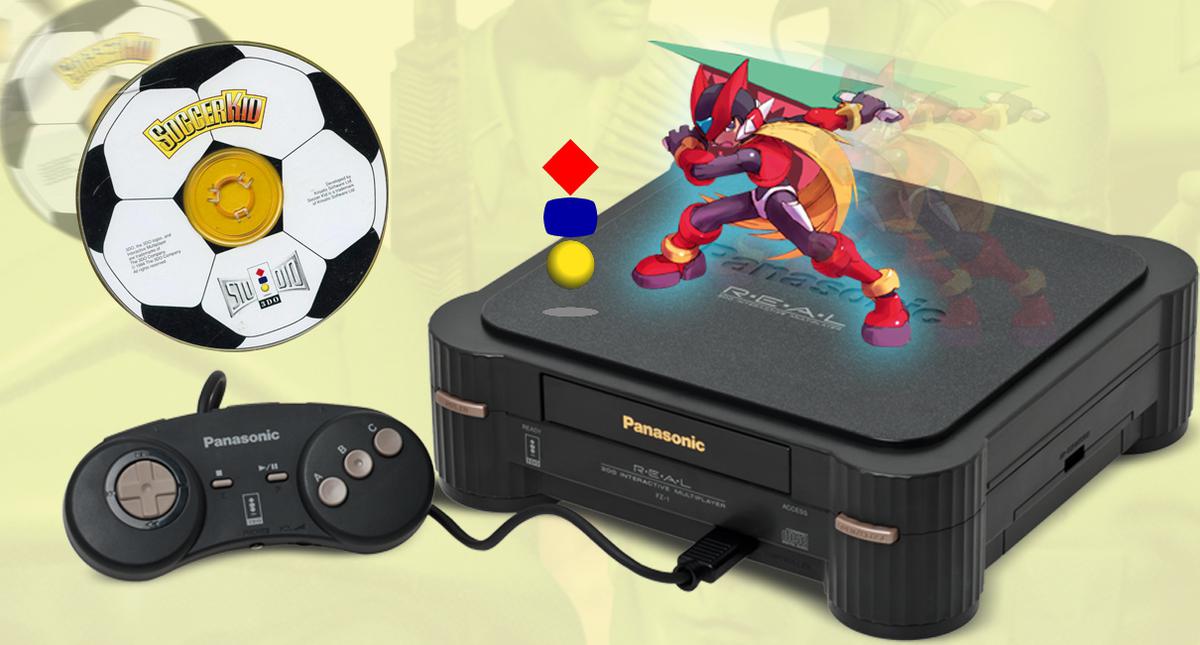What is a flagship? Generally, a flagship device tends to be a cut above the rest; it has additional features some of the company’s other products might not have. Flagship devices have been mentioned heavily in the past decade, but taking a trip down memory lane reminded me of a game console that was supposed to be the flagship of flagships: the 3DO Interactive Multiplayer. I encountered the console briefly as a kid, and saw it as something that would be bigger than the Sega Genesis or the Super Nintendo Entertainment System (SNES), which were the gaming devices of discussion at school.
The 3DO Interactive Multiplayer was conceived by Electronic Arts co-founder Trip Hawkins in 1991. At the time, cartridge-based consoles were the norm, with the main exception being the HuCards being used by the TurboGrafx-16 (PC Engine) and CDs already being used by the Philips CD-i. The advent of the CD meant that eventually cartridges would be obsolete. 3DO had a very aggressive marketing campaign before its eventual release in 1993, trashing both Sega and Nintendo as relics of the past in one particular advertisement.
To facilitate this changeover, Hawkins focused on the business models being used by the main two consoles at the time: the Sega Genesis and the SNES. One of Hawkins’ ideas to outperform both consoles in the market was to have the console itself manufactured by third parties, with 3DO collecting a royalty on each console sold and game manufactured. He did this at a USD 3 royalty rate, which was far lower than what Sega and Nintendo were charging. Dave Needle (who designed the Amiga computer) and R.J. Mical (who co-invented the Atari Lynx and worked with Needle on Amiga computer) were the designers of the 3DO hardware itself. Hawkins later recounted, “Rather than me start a brand new team and starting from scratch, it just made a lot of sense to join forces with them and shape what they were doing into what I wanted it to be,” he said in an interview with Retro Gamer in 2013.
The 3DO’s hardware was designed in 1989, with cutting-edge specifications that far outpaced the rivals at the time. Hawkins himself claimed that the 3DO would support high-definition TVs (still a pipe dream in 1993). The 3DO company licensed their hardware to third parties as they had no capability of producing the consoles themselves. Their chief targets were Sony and Panasonic. At the time, the PlayStation was in development, so Sony passed them over. Panasonic released a model called the FZ-1 at USD 599 in 1993. USD 599 was a figure Hawkins himself has stated, although some rumors had the console retailing at USD 699, a price at which some retailers sold the console.
Goldstar and Sanyo sold their models at lower prices. There were talks of Samsung, Toshiba and even AT&T 3DO consoles coming out, which were displayed at the 1994 Consumer Electronics Show. By mid-1994, the console was retailing at a relatively more reasonable USD 399 to USD 499. However, the console managed to get recognition as Time magazine’s “1993 Product of the Year” showing that the company was dead serious about making an astronomical leap from their 16-bit competitors.
The high prices and lack of games is what sunk this flagship before it even set sail. An ominous design with a single controller port led consumers to question how cutting edge it really was. For multiplayer games, one had to daisy-chain controllers by plugging them into each other. In addition, the only title available at launch was Crash ‘n Burn, a futuristic racing/shooter game developed by Crystal Dynamics, who would go on to launch Gex for the console in late 1994, its most popular game.

The lack of third-party support, lack of developers who could develop games that could fully utilize the console’s impressive hardware, and the release of cheaper CD-based consoles led to 3DO dropping the price in early 1996 to less than USD 200. There were rumors of the 3DO M2 around the time of the price drop, which would have had online play and backwards compatibility (something not done until the release of the PlayStation 2 in 2000), but the project was scrapped.
At the end of 1996, the 3DO was discontinued and the 3DO Company focused on developing games for the PlayStation, Sega Saturn, and the PC markets. While the prices reflected something similar to a flagship device, the quality of games were considered poor, with many games resembling interactive movies rather than actual video games. In addition, Hawkins’ business model was criticized and the idea of allowing third parties to manufacture the console has never been repeated since.
While a novel concept at the time (in business terms) and an ambitious attempt to incorporate cutting-edge technology, it had all the makings of a flagship device. However, like most new technologies, everyone was caught playing catch-up and developing software for the console was difficult and it only appealed to a niche audience. The console enabled Sony and Nintendo (and to a lesser extent, Sega) to accelerate into the 32-bit era.
Also published in GADGETS MAGAZINE August 2016 Issue
Words by Jose Alvarez
